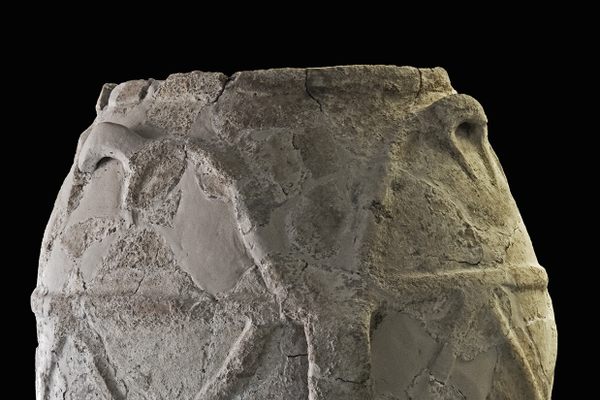FOUND: 10,000-Year-Old Fava Beans

Modern fava beans—still kind of tricksy (Photo: Hohum/Wikimedia)
Long before Hannibal Lecter was enjoying his human liver with fava beans and Chianti, early farmers in Galilee were cultivating the same legumes.
At three sites in Israel, archaeologists have found 469 charred fava beans—and dated them to 10,200 years ago. Their analysis, published in Nature Scientific Reports, indicates that people were cultivating these beans as early as the 11th millennium B.C.E., around the time that domestication of plants began in this area of the world.
But scientists are still puzzling out exactly how that worked. How did humans coax plants into reliably producing fat seeds to feed us? The seeds that the archaeologists examined in these studies indicated that one mechanism early farmers used was selecting for seeds that were “non-dormant”—that they could convince to germinate on cue, without having to wait for their natural production cycle to kick in.
This was very early in the plant cultivation game. The first evidence of wine making is dated to only 8,000 or so years ago, which means it would take 4,000 years for anyone to try pairing favas with red wine.
Bonus finds: A century-old piece of wedding cake, a 1,700-year-old ring featuring a naked Cupid, a new species of monkey ancestor
Every day, we highlight one newly lost or found object, curiosity or wonder. Discover something unusual or amazing? Tell us about it! Send your finds to sarah.laskow@atlasobscura.com.
Gastro Obscura covers the world’s most wondrous food and drink.
Sign up for our regular newsletter.
























Follow us on Twitter to get the latest on the world's hidden wonders.
Like us on Facebook to get the latest on the world's hidden wonders.
Follow us on Twitter Like us on Facebook